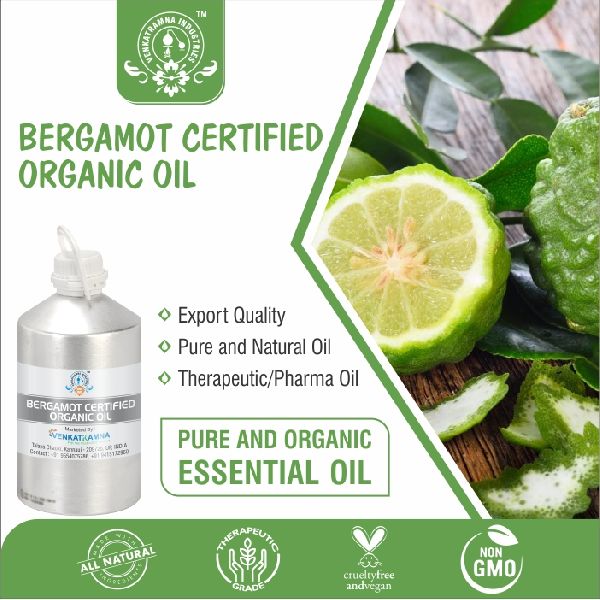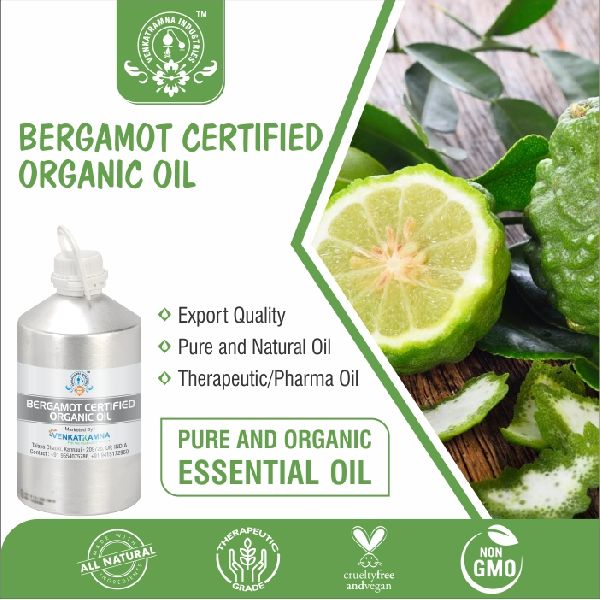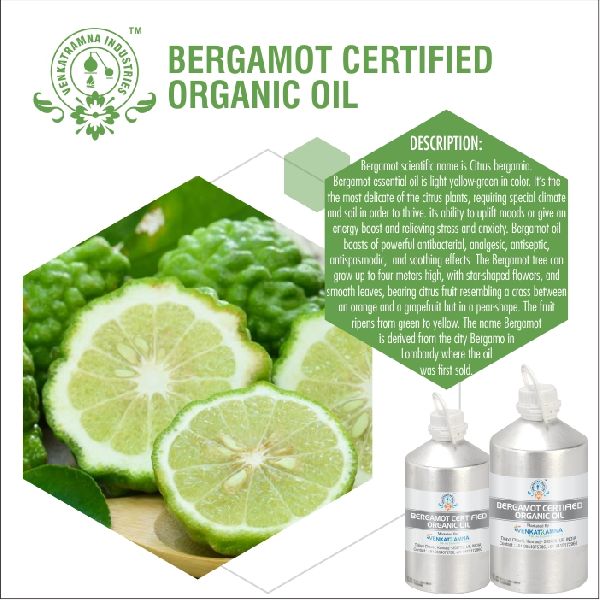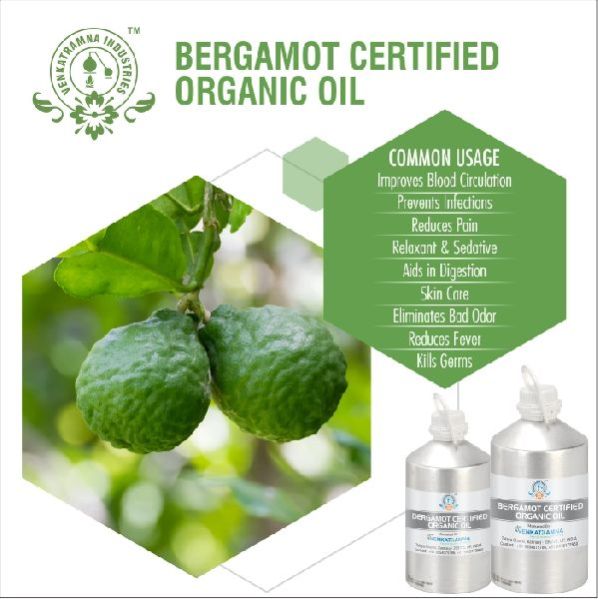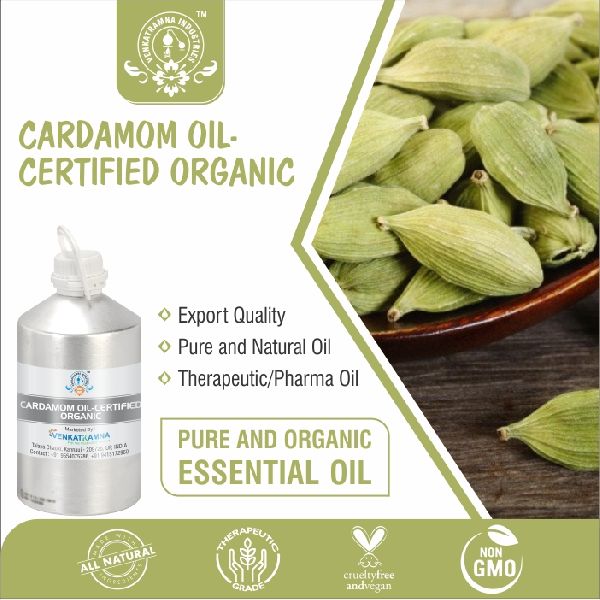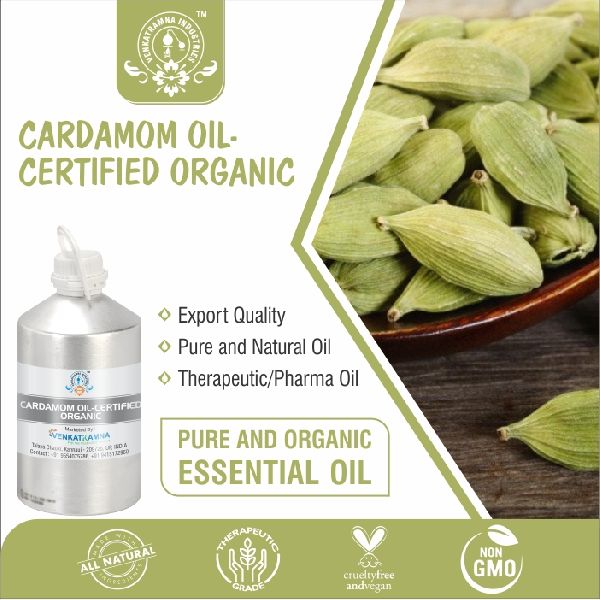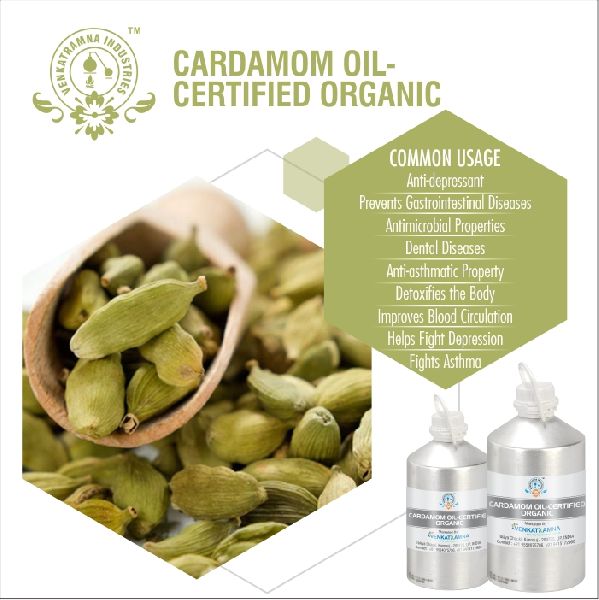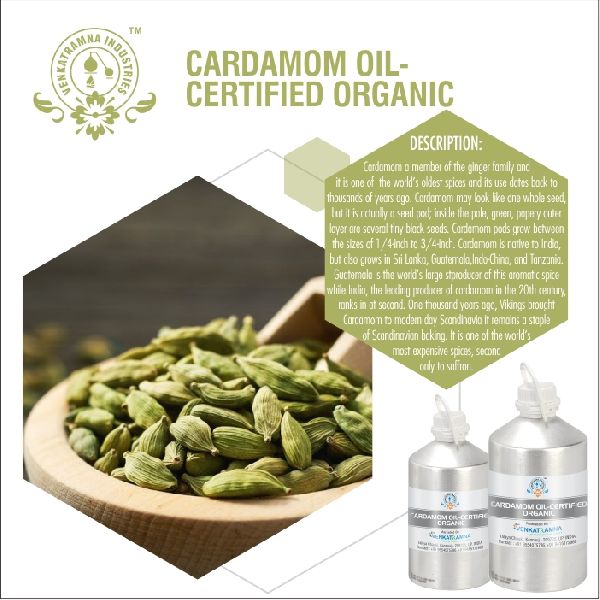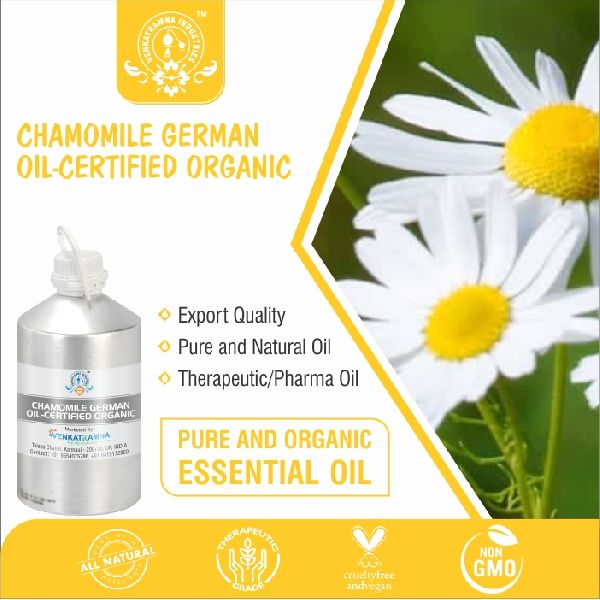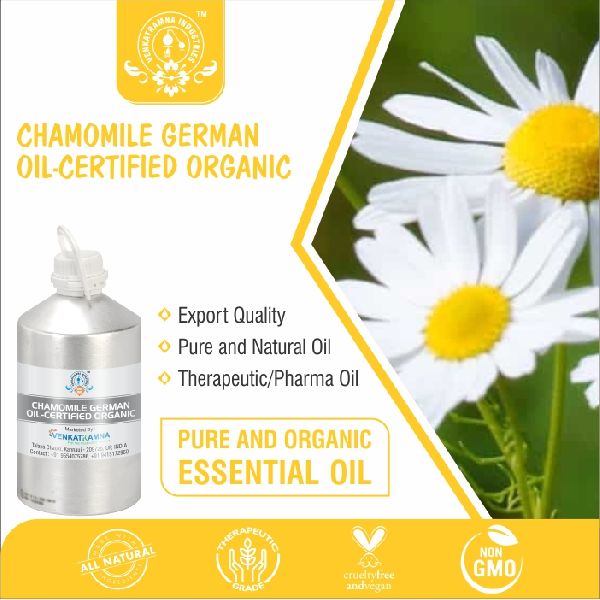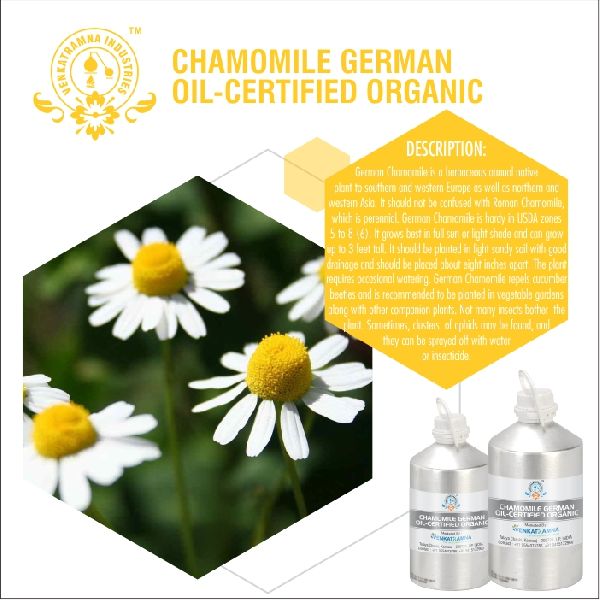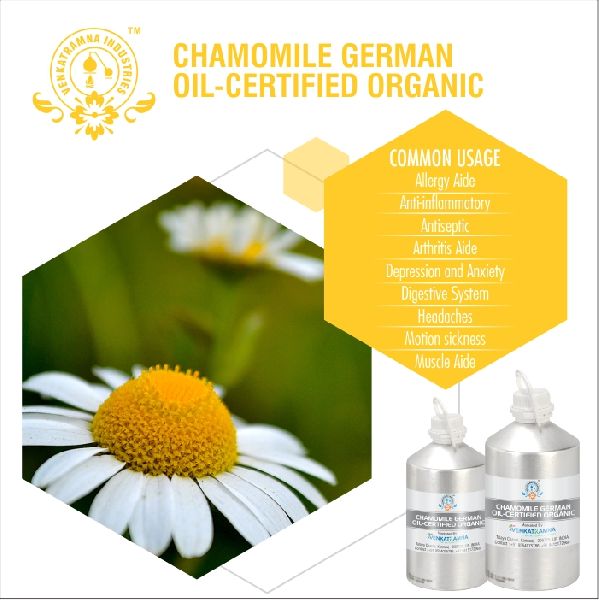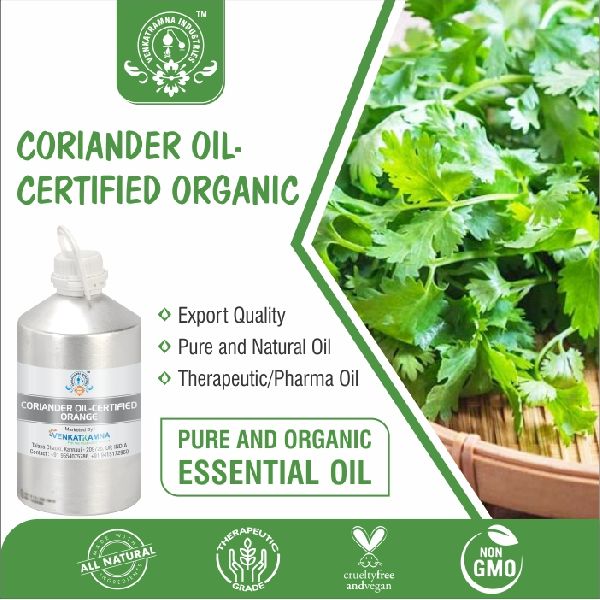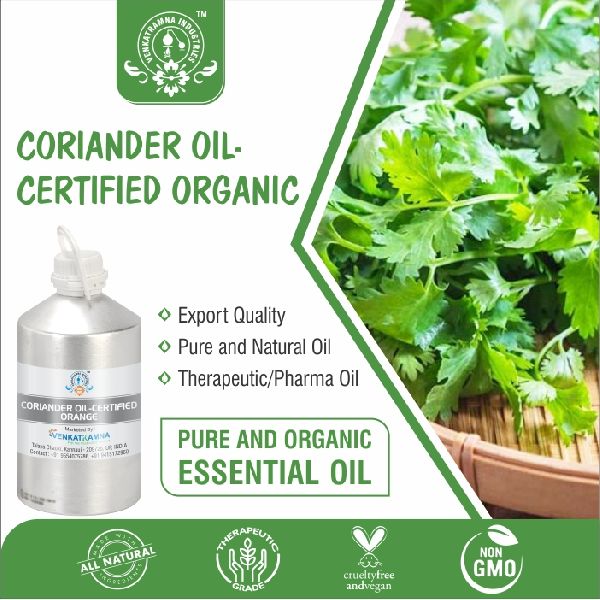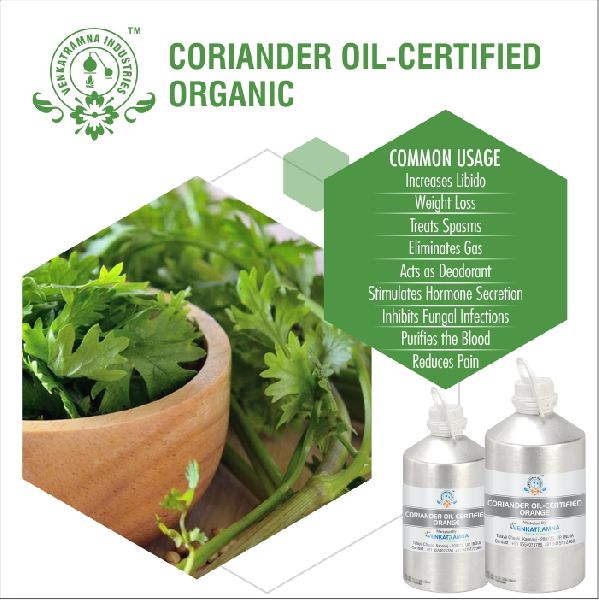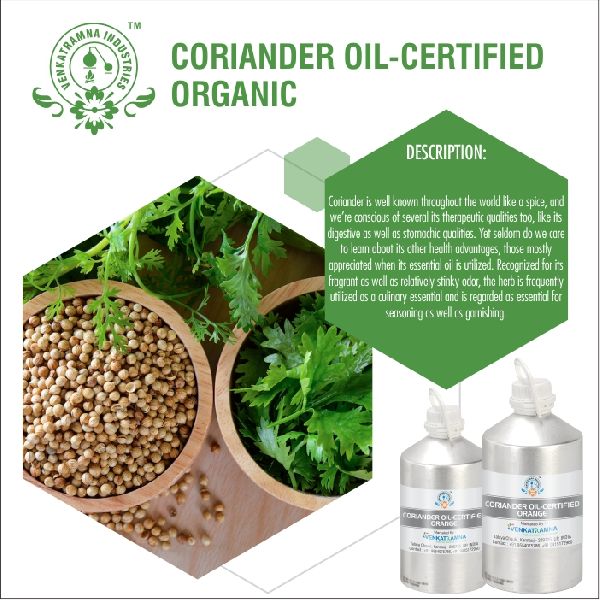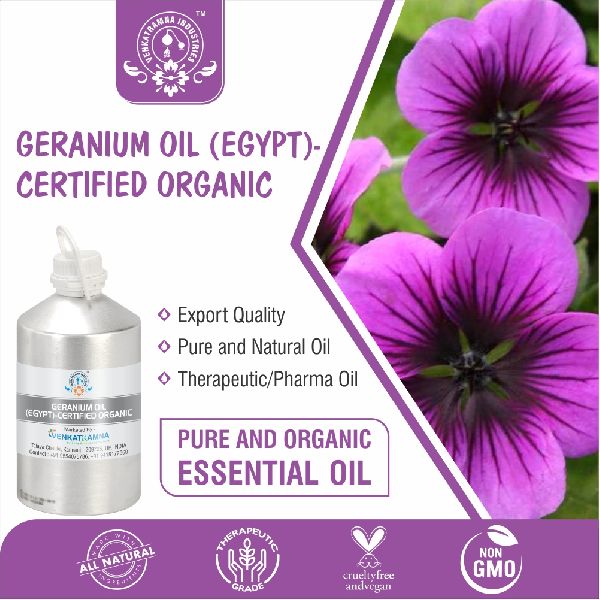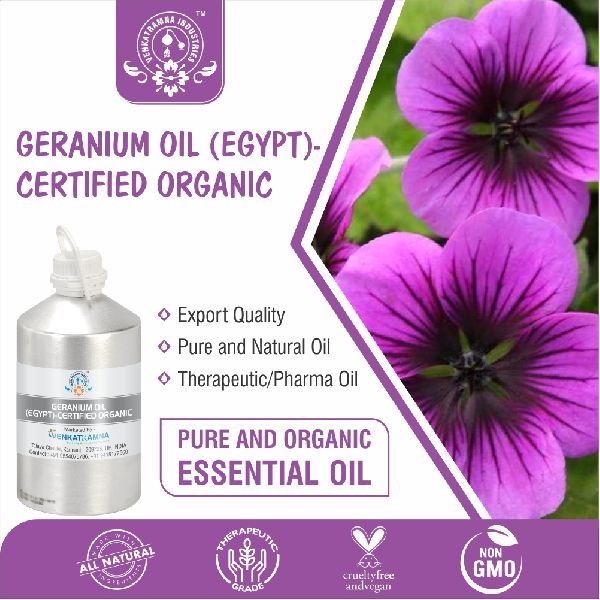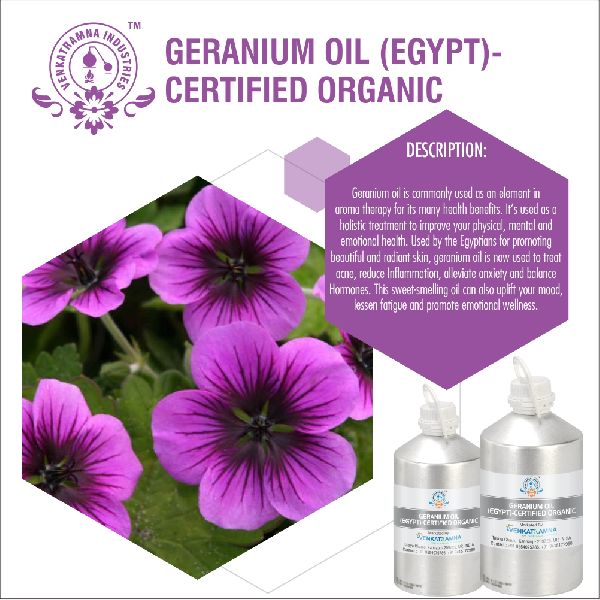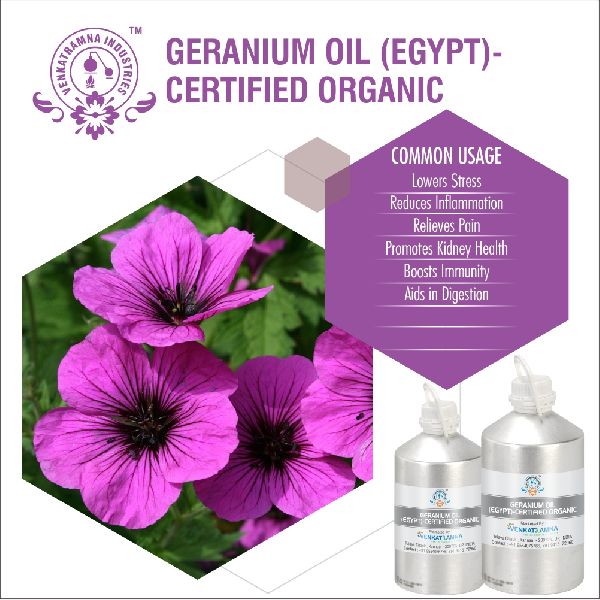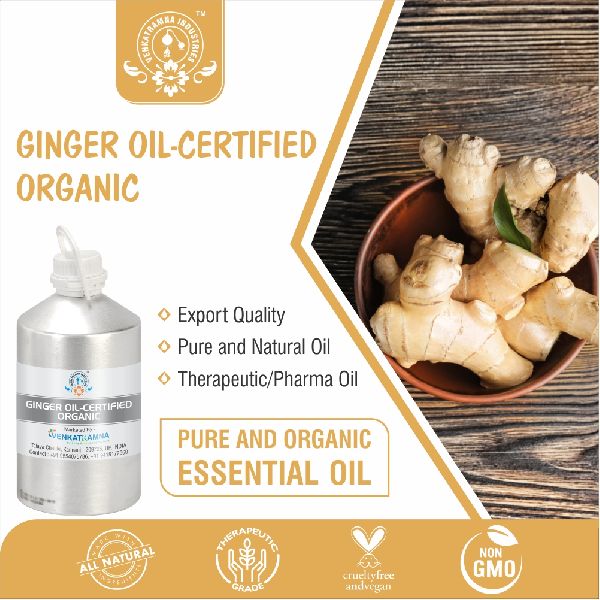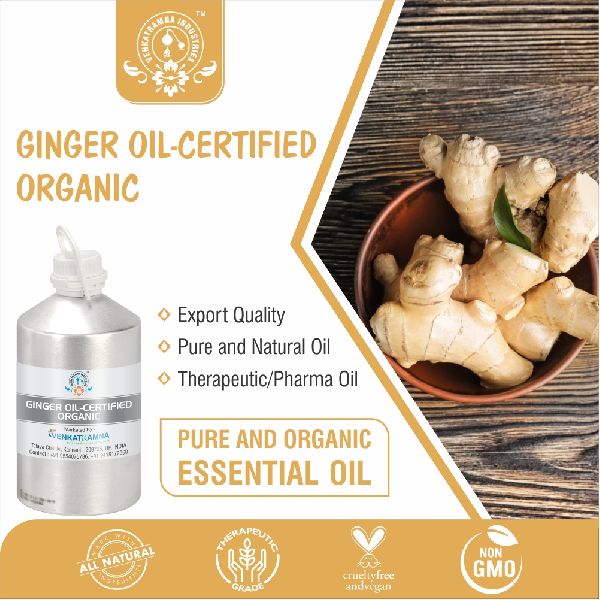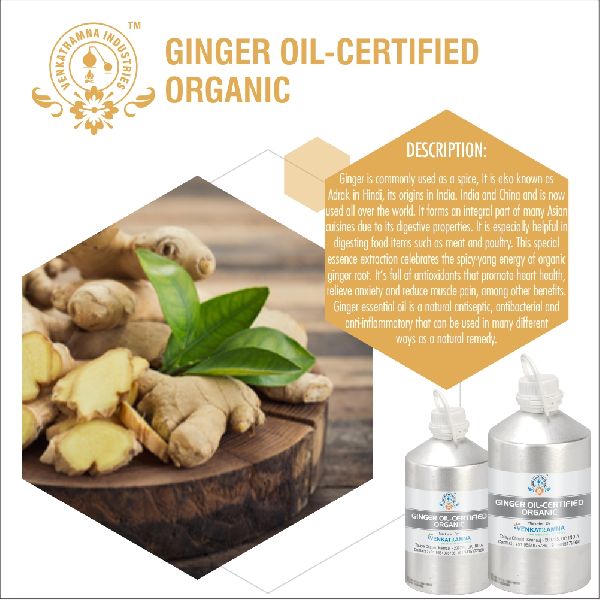Indra Nagar, Kanpur, Uttar Pradesh - GST No. 09AVOPS2676K1ZN
- Send SMS
- Send Email
Organic Essential Oil
Leading Manufacturers, Exporters, Wholesaler and Retailer of Bergamot Certified Organic Oil, Cardamom Organic Essential Oil, Chamomile German Oil, Coriander Organic Oil, Geranium Oil and Ginger Organic Oil from Kanpur.
| Business Type | Manufacturer, Exporter, Supplier, Retailer, Wholesaler |
Preferred Buyer From
| Location | Worldwide |
Bergamot scientific name is Citrus bergamia. Bergamot essential oil is light yellow-green in color. It’s the most delicate of the citrus plants, requiring special climate and soil in order to thrive.
The bergamot tree can grow up to four meters high, with star-shaped flowers, and smooth leaves, bearing citrus fruit resembling but in a pear-shaped. The fruit ripens from green to yellow. The name bergamot is derived from the city Bergamo in Lombardy in Lombardy where the oil was first sold.
Citrus bergamot is commercially grown in southern Calabria, southern Italy. It is also grown in southern France and in cote d’lviro for the essential oil and in Antalya in southern Turkey for its marmalade. The fruit is not generally grown for juice consumption. However, in Mauritius where it is grown on small-scale basis, it is largely used for juice consumption by the locals.
| Business Type | Manufacturer, Exporter, Supplier, Retailer, Wholesaler |
Preferred Buyer From
| Location | Worldwide |
Cardamom (Elettaria cardamomum) is a perennial, herbaceous rhizomatous monocot, belonging to the family Zingiberaceae. It is a native of the moist evergreen forests of the Western Ghats of South India. The cardamom of commerce is the dried ripe fruit (capsule) of the cardamom plant. This is often referred to as the 'Queen of Spices' because of its very pleasant aroma and taste and is highly valued from ancient times. It is grown extensively in the hilly regions of South India at elevations of 600-1300 m as an under crop in forest lands. Cardamom is also grown in Sri Lanka, Papua New Guinea, Tanzania and Guatemala. Guatemala is incidentally the largest producer of cardamom now.
Cardamom is a major spice crop of India and improvement of the crop has attracted considerable attention after independence. The 'Western Ghat forests' of the Malabar Coast of India is the centre of origin and the primary centre of diversity of cardamom. In ancient days, cardamom was collected mainly by tribal people as a forest produce. Later, by the end of 19" century, cardamom plantations came up in Western Ghat forest areas and also in Ceylon (Sri Lanka). The credit for starting organized cultivation of cardamom goes to the British planters. Later cardamom was introduced to Guatemala from Ceylon by 1920s and after the second world war cardamom production in Guatemala expanded considerably and by 1970s the country became the largest commercial producer of cardamom eclipsing the monopoly of India.
Cardamom oil is produced commercially using crushed fruits. It is used mainly as an alternative to the spice for flavouring a wide range of processed and frozen foods, condiments, gelatines and beverages. It is also used to a minor extent as tobacco flavouring, and in cosmetics, soaps, lotions and perfumes. Oleoresin is used as an oil substitute in similar products.
| Business Type | Manufacturer, Exporter, Supplier, Retailer, Wholesaler |
Preferred Buyer From
| Location | Worldwide |
Chamomile is a plant that has been used since ancient Egypt in a variety of healing applications. Chamomile is a native of the Old World; it is related to the daisy family, having strongly scented foliage and flowers with white petals and yellow centers. The name chamomile is derived from two Greek words that mean “ground” and “apple,” because chamomile leaves smell somewhat like apples, and because the plant grows close to the ground.
There are two varieties of chamomile commonly used in herbal preparations for internal use and for aromatherapy. One is called Roman chamomile (Anthemis nobilis), with contemporary sources in Belgium and southern England. Roman chamomile grows to a height of 9 in (23 cm) or less, and is frequently used as a ground cover along garden paths because of its pleasant apple scent. German chamomile (Matricaria recutita) is grown extensively in Germany, Hungary, and parts of the former Soviet Union. German chamomile grows to a height of about 3 ft (1 m) and is the variety most commonly cultivated in the United States, where it is used medicinally.
Moroccan chamomile is a member of the tansy botanical family and is like German chamomile since day both produce a deep, ink-blue color when in the form of an essential oil. Out of the two varieties, Moroccan chamomile has the highest levels of chamazulene; however, there are some chamomiles that are not blue in color. They are appelled Moroccan chamomile because they are a variety of chamomile that is a grown in morocco. True Tanacetum annuum is blue and contains the highest levels of chamazulene; however, there is some concern with Tanacetum annuum, also called blue tansy oil.
| Business Type | Manufacturer, Exporter, Supplier, Retailer, Wholesaler |
Preferred Buyer From
| Location | Worldwide |
Coriander (Coriandrum sativum L.) is a plant from the family of Apiaceae. Seeds and the herb of coriander, both of which are used as spice or a medicinal plant. It contains flavoring compounds such as linalool, geraniol, pinen, limonene, geranylacetat, terpinen, and borneol. It is broadly cultivated in various environments around the globe. In general, coriander falls into two major categories based on fruit size. This ultimately determines its oil content and use.
India is the biggest producer, consumer and exporter of coriander in the world with an annual production of around three lakh tonnes. It is an annual, herbaceous plant which originated from the Mediterranean and Middle Eastern regions and known as medicinal plants. It contains an essential oil (0.03 to 2.6%) (Nadeem et al., 2013). All parts of this herb are in use as flavoring agent and/or as traditional remedies for the treatment of different disorders in the folk medicine systems of different civilizations (Sahib et al., 2012). Coriander closely resembles flat leaf parsley. This resemblance makes many people confused between the two however, coriander has strong fragrance and parsley has mild fragrance. It grows best in dry climates however it can grow in any type of soil like light, well drained, moist, loamy soil, and light to heavy black soil (Verma et al., 2011). Its seeds are almost ovate, globular and have a mild, sweet, slight pungent like citrus flavor with a hint of sage. The most important constituents of its seeds are the essential oil and fatty oil
| Business Type | Manufacturer, Exporter, Supplier, Retailer, Wholesaler |
| Type | Geranium Oil, Natural Essential Oil |
| Color | Green, Pale Yellow |
| Purity | 100 % |
| Form | Liquid, Oil |
| Ingredient | Geranium |
| Raw Material | Flowers |
| Packaging Type | Aluminim Bottles |
| Part | Flowers, Leaves |
| Country of Origin | India |
| Packaging Size | 10 Ml, 100kg, 1kg, 25kg, 5kg |
| Product Code | VRI/NE/01-096 |
| Payment Terms | Other |
| Delivery Time | 2 Days after payment confirmation |
Preferred Buyer From
| Location | Worldwide |
The family Geraniaceae contains three genera: Geranium, Erodium, and Pelargonium. The names, derived from the three Greek words meaning crane, heron, and stork, refer to the resemblance of the seed case to the slender bills of these three birds. Pelargonium species originate in South Africa and different species are found in distinct habitats. The Pelargonium species related to the Geranium oil-producing cultivars are mainly located in the Cape area.
Pelargonium plants are comprised of a myriad of hybrids and cultivars. They are bushy perennial shrubs possessing hairy, jagged leaves and clusters of small, pink striped flowers. The plant grows best in a warm temperate climate with plenty of sunshine for maximum oil development. It is sensitive to cold weather and frost averse. Glands located widely over the surface of the leaves and the green parts of the plant produce an aromatic volatile oil. Variations in the aromatic compounds of different cultivars results in diverse aromatic profiles for the different types of geranium essential oils available, that is, rose geranium, geranium or rose geranium bourbon. This is a key component of the surprise and delight inherent in plant-based aromas.
| Business Type | Manufacturer, Exporter, Supplier, Retailer, Wholesaler |
Preferred Buyer From
| Location | Worldwide |
Ginger is widely used as spice, and it has its origins in India.It is a medicinal plant in folk and traditional medicines. The spice is very common in India (it is known as adrak in Hindi) and China and is now used all over the world. It forms an integral part of many Asian cuisines due to its digestive properties. It is especially helpful in digesting food items such as meat and poultry, and it is frequently added to recipes for cooking meat as it softens the meat considerably, making it easier to digest. Ginger root and ginger oil are also used as preservative and flavoring agents.Ginger oil is extracted from Z. officinale rhizomes, which its chemical composition influences from geographical region, extraction methods, freshness or dryness of rhizomes. The antibacterial, antifungal, analgesic, anti-inflammatory, anti-ulcer, immunomodulatory, relaxant, and warming effects of ginger oil have been confirmed in experimental and preclinical studies.
Ginger (Zingiber officinale) is a plant used in traditional medicine against different diseases because of its various properties (antimicrobial, antioxidant, anti-inflammatory, anticoagulant, etc.). Ginger is “generally recognized as safe” by the Food and Drug Administration. Numerous studies have been carried out to characterize and isolate its main bioactive compounds to elucidate the mechanisms of its antimicrobial activity against pathogenic and spoilage microorganisms in foods. Results indicate that ginger contains monoterpenoids, sesquiterpenoids, phenolic compounds, and its derivatives, aldehydes, ketones, alcohols, esters, which provide a broad antimicrobial spectrum against different microorganisms and make it an interesting alternative to synthetic antimicrobials. However, its application in foods has been scarcely explored and represents an opportunity area for further research.

